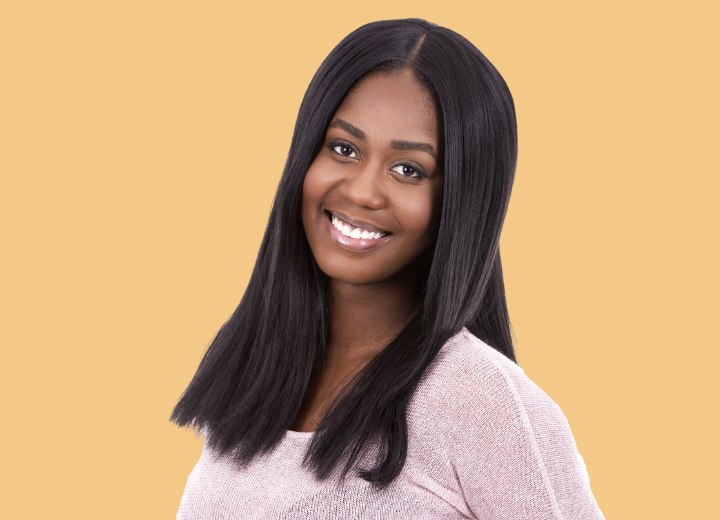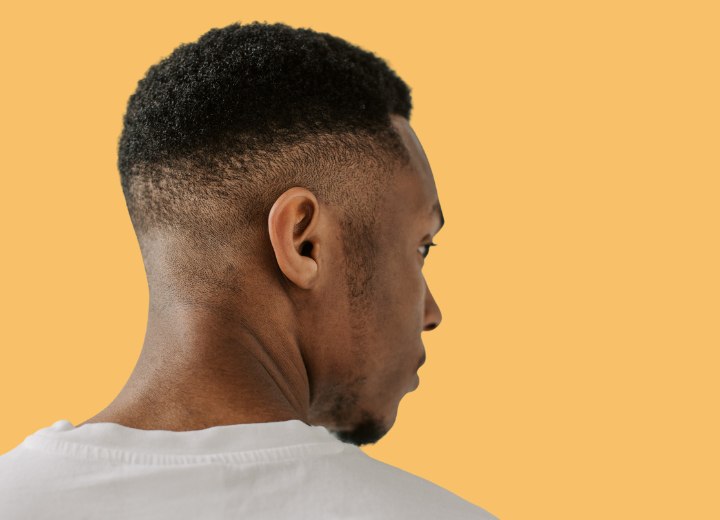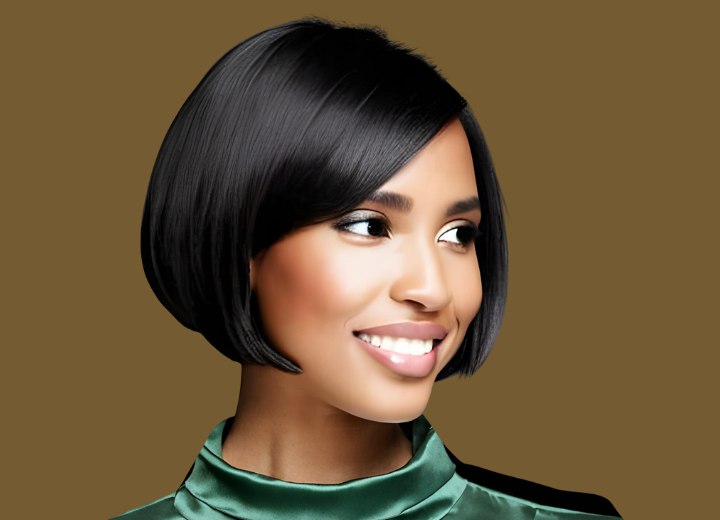African Hair 101 (2)

Extensions
When someone wants to shorten their hair, they go to the salon and have it cut. But longer hair takes time to grow, which is why some people opt for hair extensions. Extensions are lengths of natural or artificial hair that are attached to the hair on the head through various means. Some braiding styles involved weaving extra hair into the braids to create longer braids than are possible with the natural hair.
Some extensions are attached to the hair in wefts using an adhesive binding agent, or metallic rings (that are crimped to secure the extensions) to the existing hair. Still, other methods involve braiding the hair into horizontal "tracks" along the scalp, to which wefts are sewn using a needle and thread. This is called weaving and in some cases can actually be done without creating a track, sewing the extension weft directly to the natural hair.
Finally, there are extensions that are attached to the hair in small clusters (usually two to three at a time attached to one or two growing hairs) using an adhesive and special tool to create what is known as fusion extensions. This latter technique is the most expensive, but allows for the creation of the most natural-looking results.
Finger waves
In some cases, women and men with shorter hair want to create looks with sleek, controlled wave and texture. In these cases, finger wave styles are just the ticket. A finger wave is created using a styling gel or lotion to hold the hair, and a comb and one's fingers to shape the hair into the desired pattern of curves and ridges. Once styled into the desired look, the hair is allowed to dry and set, leaving you with a long-lasting style.

A fade refers to a clipper-cut hairstyle that tapers to the skin. In the mid-80s the "Hi-Top Fade" was popularized by such artists as Kid’n’Play, Will Smith, and Bobby Brown. The fade most closely resembles a flat top haircut in which the sides are so closely cropped as to be nearly shaved. The hi-top fade took this style and incorporated longer hair at the top of the head. The length of what qualified as a "hi-top fade" as opposed to simply a "fade" cut was very subjective.
Jheri Curl
Those Black men and women who want a curly hairstyle, but not the tight, kinky coils that are commonly found among those of African descent, sometimes opt for a soft-curl perm. This perming process became known as the Jheri curl, named after its creator, stylist and hair product mogul, Jheri Redding. The style was created in a two-stage process of relaxing the hair and wrapping it on perm rods to create larger curls.
The permed hair is treated daily with an activator. The style lost popularity with most people due to the expense of maintenance and the staining effect of the activator product that had to be constantly applied.
Natural
Natural hair among those of African descent refers to any hairstyle or styling technique that uses the hair as it grows from the scalp, without any chemical processing to alter the hair's texture or wave pattern. There has been a strong refocus among Black women, especially in recent years, to stop using the harsh chemicals on their hair and "go natural". Their aim seems to be to emphasize the beauty of natural black hair, whether it’s worn in an afro, twist, braid, or other non-chemically-treated style.

In an effort to make the hair smoother and easier to style in different ways, some Black women and men choose to "relax" their hair. This process involves the use of chemicals that break the chemical side bonds of the hair (the disulfide bonds) allowing the hair to hang straighter and lay smoother. In most cases, once the hair has been relaxed, it is styled using another styling method (roller set, curling iron, hot rollers, etc.) to create a finished look as desired.
Twists
This is a styling technique that is sometimes used to begin dreadlocks. The finished look for a "twist" style depends on the length of the hair and the amount of hair used in each twist. The finished look also depends on whether the hair is sectioned with a comb or simply separated using the fingers. Using the fingers to section the hair creates a fuller look. Sectioning with a comb creates cleanly defined sections and can be used to make patterned sections in the scalp.
The twists can be wound as tightly as desired and are generally styled with creams or gels to secure the look. In some cases, the section is divided into two equal parts and the two halves are twisted around each other to create a more textured twist.
©Hairfinder.com